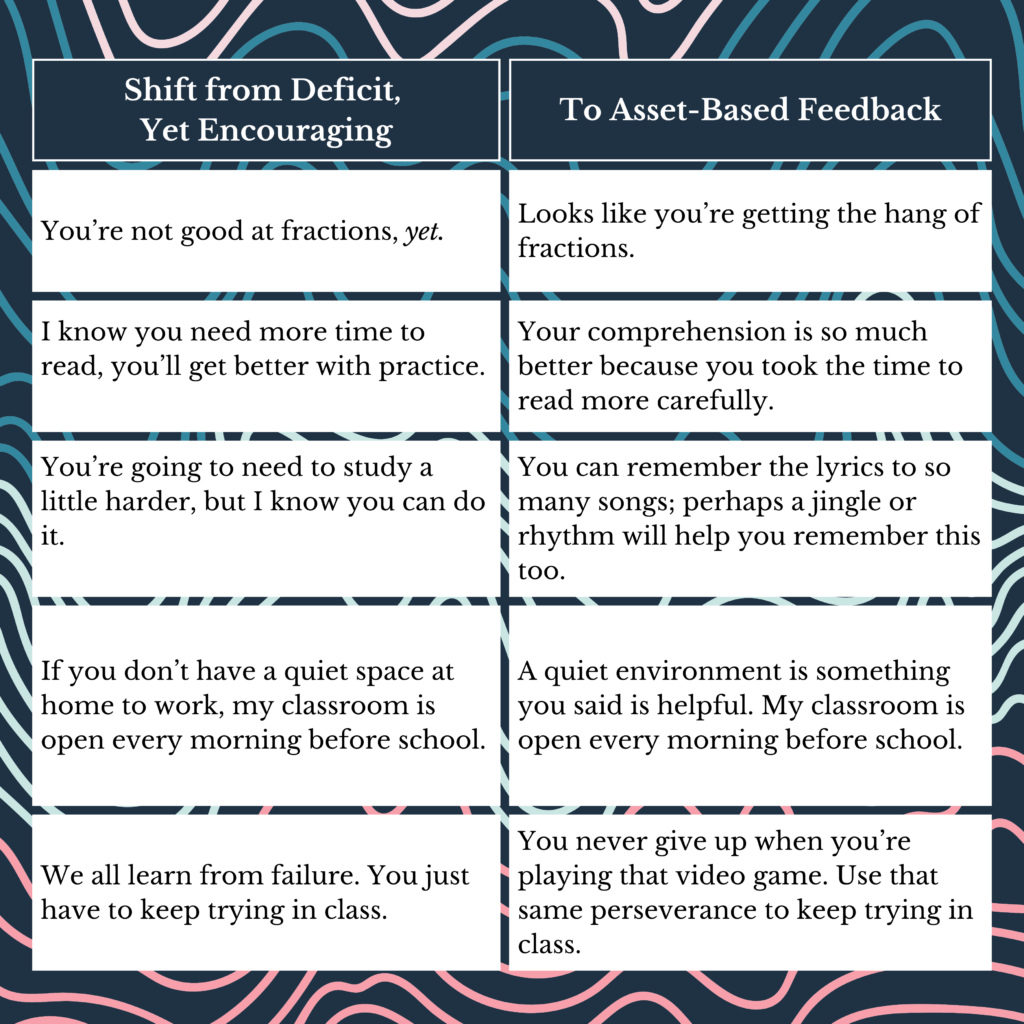Shifting the Paradigm from Deficit Oriented Schools to Asset Based Models: Why Leaders Need to Promote an Asset Orientation in our Schools.
Shannon Renkly
Katherine Bertolini
Argument:
The purpose of this article is to inspire readers to reflect and, at the same time, connect with students in a school system that can often make mistakes. Education can create inequality when it focuses solely on students' shortcomings rather than their strengths. Two key words in this article are the deficit model and the asset model.
The deficit model occurs when schools focus solely on students' weaknesses and what they cannot do. This model consumes students because it focuses more on their failures and deficiencies. On the other hand, the asset model represents a social justice approach because it emphasizes students' strengths, talents, and abilities. When the asset model emerges, collaboration between the community, parents, and school is more likely. It is exhausting when schools or education focus solely on adolescents' weaknesses, as it creates a barrier between parents and the school.
Risks and problems cannot be ignored, but it is necessary to understand that to maximize the positive, we cannot focus only on the negative. If teachers and school leaders take an active role, this could transform social and educational structures, enabling everyone to access opportunities and recognition. Moving from a deficit model to an active model is not only an academic strategy but also an act of equity and dignity, fostering a space of inclusion where everyone feels heard rather than judged. By abandoning the "labeling and limiting" perspective, we can focus on empowered, resilient, and engaged citizens.
Finally, I will end with a quote from the article that I really liked: "For an entire school to work toward a values model for student and teacher success, this must be included in the school's shared vision, mission, and goals, which constitute the context of the first ELCC standard."

Strength-based teaching is important so that every student can achieve their learning goals. As a future language teacher, this article caught my attention because it addresses important aspects such as culture, linguistics, a sense of community, and diversity of thought. https://www.everylearnereverywhere.org/blog/what-is-assets-based-teaching-and-how-does-it-enable-equity-practices-in-college-classrooms/?utm_

Question to share in class:
Let's suppose you're a teacher. What strategy would you use to focus on students' strengths instead of their weaknesses? Please specify this in your answer.


I love the charts and website you included in your post. I especially like that the website discusses asset-based learning in higher education, so we can think about how we could see the model in our current classes. As for you question, I think the strategy mentioned in the text of finding a student's "jewels" (interests, skills, or talents) and incorporating them into lessons is a good place to start.
ResponderBorrarHi Yarlin,
ResponderBorrarI really like your post, and most specifically, what you mentioned in the third paragraph when you indicated that students' success doesn't only come from academic efforts but also from acting in equity and dignity manner! I completely agree with you! I've seen many elementary teachers, for example, yelling at their students to calm them down when they were talking loudly instead of using empathy and showing love, those approches that can, by their natures, solve any kind of problems so smoothly without harming the students feelings and personalities.